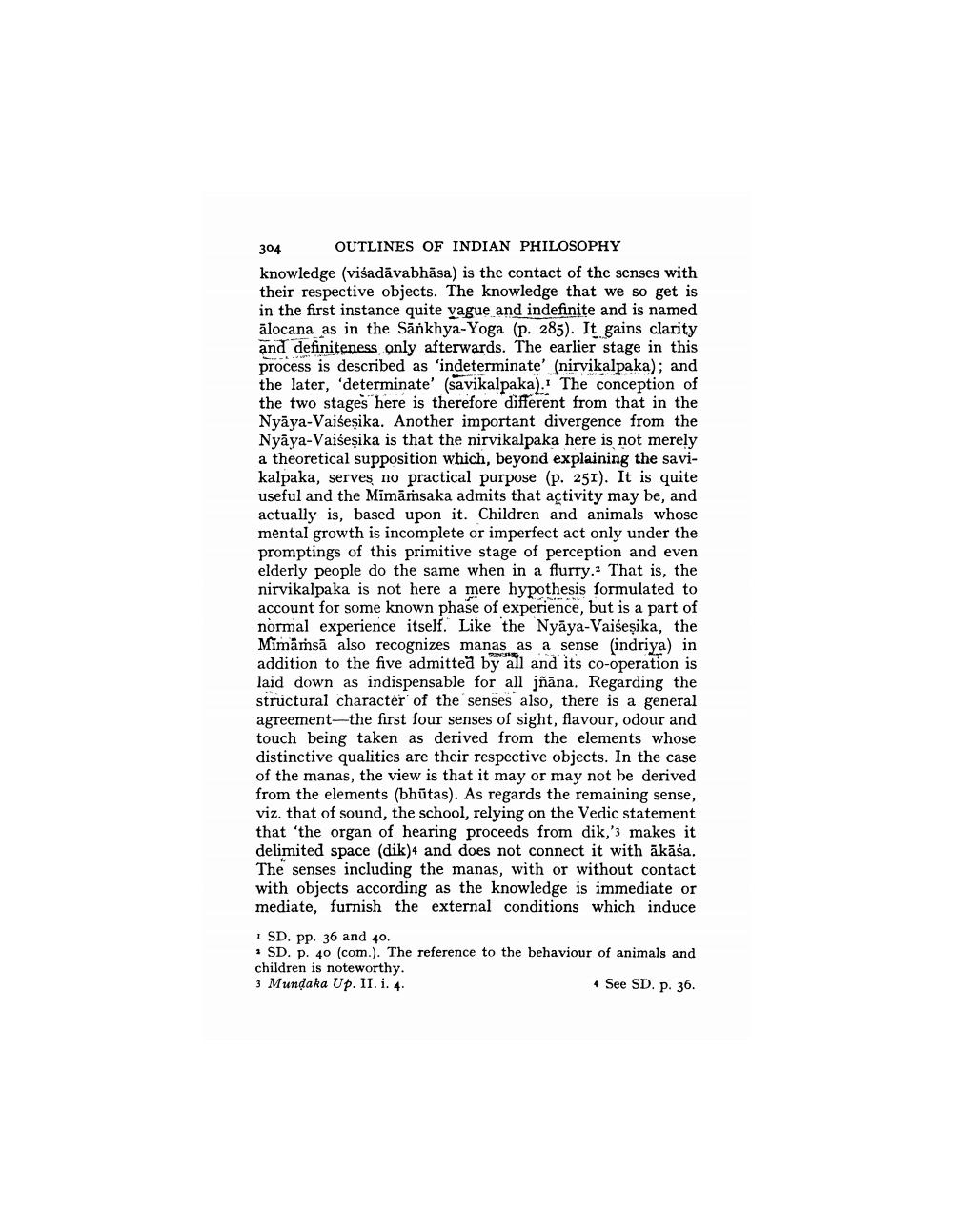________________
304 OUTLINES OF INDIAN PHILOSOPHY knowledge (visadāvabhāsa) is the contact of the senses with their respective objects. The knowledge that we so get is in the first instance quite vague and indefinite and is named ālocana as in the Sankhya-Yoga (p. 285). It gains clarity and definiteness only afterwards. The earlier stage in this process is described as 'indeterminate' (nirvikalpaka); and the later, determinate' (savikalpaka). The conception of the two stages here is therefore different from that in the Nyāya-Vaišeşika. Another important divergence from the Nyāya-Vaiseșika is that the nirvikalpaka here is not merely a theoretical supposition which, beyond explaining the savikalpaka, serves no practical purpose (p. 251). It is quite useful and the Mimāmsaka admits that activity may be, and actually is, based upon it. Children and animals whose mental growth is incomplete or imperfect act only under the promptings of this primitive stage of perception and even elderly people do the same when in a flurry.2 That is, the nirvikalpaka is not here a mere hypothesis formulated to account for some known phase of experience, but is a part of normal experience itself. Like the Nyāya-Vaiseşika, the Mimāmsā also recognizes manas as a sense indriya) in addition to the five admitted by all and its co-operation is laid down as indispensable for all jñāna. Regarding the structural character of the senses also, there is a general agreement--the first four senses of sight, flavour, odour and touch being taken as derived from the elements whose distinctive qualities are their respective objects. In the case of the manas, the view is that it may or may not be derived from the elements (bhūtas). As regards the remaining sense, viz. that of sound, the school, relying on the Vedic statement that 'the organ of hearing proceeds from dik,'3 makes it delimited space (dik)4 and does not connect it with ākāśa. The senses including the manas, with or without contact with objects according as the knowledge is immediate or mediate, furnish the external conditions which induce · SD. pp. 36 and 40. · SD. P. 40 (com.). The reference to the behaviour of animals and children is noteworthy. 3 Mundaka Up. II. i. 4.
+ See SD. P. 36.




